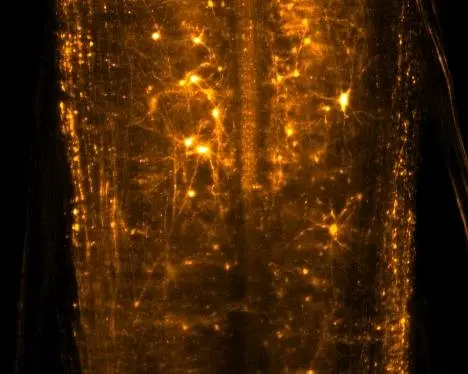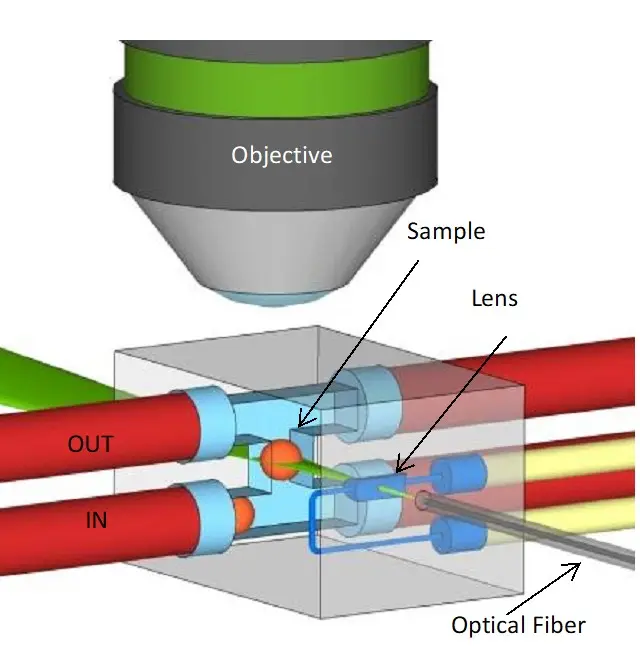Optical microscopy and nanoscopy
Optical microscopy and nanoscopy
Thesis 1
Selective Plane Illumination Microscopy
Being able to spatially resolve micrometric structures becomes a primary need when studying complex biological tissues. This analysis is required by a variety of applications, for example imaging neurons in a network. In this framework, laser physics, computer science and medicine merge.
It is particularly important to obtain subcellular resolution over a volume as wide as possible so to have a picture of the phenomena on a systemic scale. Fluorescence microscopy allows acquiring volumetric imaging of cells and tissues over several millimetre volumes at high spatial resolution.
The student will contribute to setup a new microscopy method, based on Light Sheet Fluorescence Microscopy (LSFM), which is paired with the computational tool of compressive sensing for the reconstruction of the entire sample upon volumetric patterned excitation.
The aim of the thesis is the development of an acquisition and processing method, based on structured illumination, which will be used to study millimetre to centimetre scaled biological tissues and samples. Of particular interest will be the study of entire murine brains, which will be conducted in collaboration with Humanitas University.
Thesis 2
Development of an optofluidic super-resolution microscope
Defining the 3D organization of cancer-associated chromatin domains would represent a new frontier to decipher tumor heterogeneity. Currently, there are no available techniques that can rapidly analyze thousands of cells and their sub-cellular structure, as required for medical diagnosis.
For this reason, we aim to develop a new kind of high-throughput super-resolution microscope that is fully integrated in a microfluidic chip and that can reach resolution beyond the diffraction limit (<200nm).
In particular, the new microscope will be based on structured illumination where a two-dimensional periodic interference pattern illuminates the fluorescent sample at different orientations. In this way, 3D super-resolved sample reconstructions are achieved.
Reaching this goal not only will demonstrate that super-resolution microscopes, that nowadays only few laboratories could afford, can be integrated in low-cost lab-on-chip, but will represent a breakthrough in medicine, since will bring to the identification of those genetic modifications characterizing a specific subset of cancer and its responsiveness to particular treatments.
This thesis proposal is part of the ProChip project (https://pro-chip.eu/), that has been granted a 2,5€ million from the Horizon 2020 program, and will be carried out by an international consortium of six organizations, including, Politecnico di Milano, Consiglio Nazionale deel Ricerche, Imperial College London, National Institute of Applied Sciences (INSA) Lyon, University of Trento and the company Elvesys in Paris.
Background and requirements:
The student will be firstly trained, and then deeply involved in all the stages of the instrumental development, including i) the design and realization of the optical components using software tools (Zemax) ii) the automation and control of hardware parts and iii) the acquisition and analysis of images (which will be performed using Python).
Besides all this, she/he will join an interactive, multidisciplinary and international environment, formed by young and experienced researchers.
Basic knowledge of at least one programming language (Java, C++, Python or Matlab) is required: specific training on Python will be given at the beginning of the thesis. Good English, spoken and written are required.
The typical duration of the thesis is 8-10 months.


